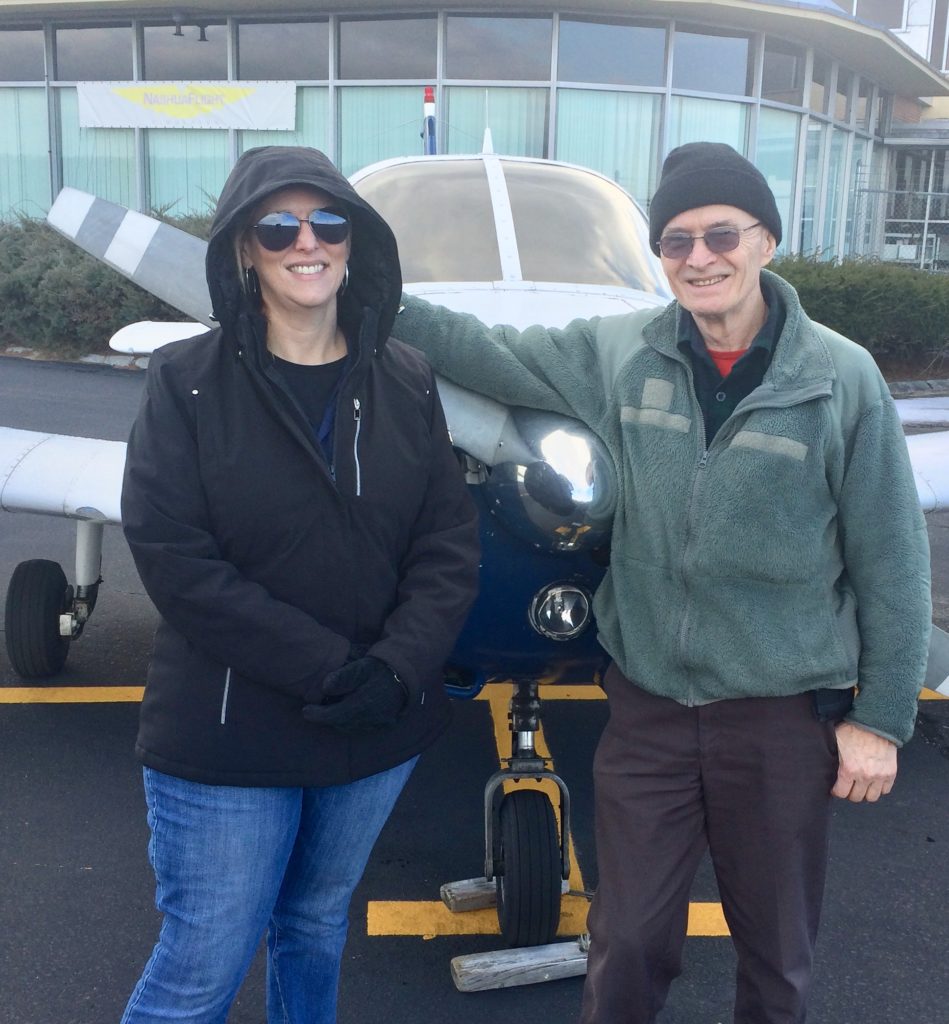
MY IFR FLIGHT REVIEW
MY IFR FLIGHT REVIEW-Why fly IFR? Flying by instrument flight rules is the most challenging yet rewarding flight experience I’ve ever had. Cruising at 19,000 feet, I’ve flown my turbine above precipitation, and I’ve taken advantage of slipping much faster through thinner air – achieving true air speeds over 200 knots.
Furthermore, the higher I fly the less fuel I burn even at double century speeds. That’s an extraordinary benefit on cross country flying where one may not make the destination while still in daylight in a slower airplane. Instrument flying has another benefit; with a flight plan filed I know the exact altitudes and courses to fly to reach my destination and ATC has cleared this route for me. It’s all mine for the time slot given. All I have to do is fly each leg as depicted on my PFD and MFD. It’s like an AAA triptik, the route, time and fuel consumption are equally displayed.

Night flying
Night flying is astoundingly beautiful over a collage of city lights and airports. It’s like Christmas city scale. Blue, red, white and flashing lights are everywhere. Night flying is peaceful because nearly all the VFR traffic is gone. There’s just us IFR pilots doing their thing, flying solely by reference to instruments.
Instrument flying is all about being on heading and altitude and being where you are supposed to be at any given time. That’s precision flying and that’s the high bar that few pilots succeed at. According to an FAA 2017 report only 306,652 of 609,306 pilots are instrument rated. In this group many do not meet currency requirements stated in FAR 61.57 (d) which states “Except as provided in paragraph (e) of this section, a person who has failed to meet the instrument experience requirements of paragraph (c) of this section for more than six calendar months may reestablish instrument currency only by completing an instrument proficiency check.” That’s where I found myself in January.
Training in a simulated
Training in a simulated Cessna 182 with National Flight Simulator, I flew precision and non-precision approaches and holds in New Hampshire and Massachusetts. Then I switched simulated airplanes to a Beach Bonanza and flew to a hold and a non-precision approach, VOR 23, at Lawrence, MA. I blew this one but aced the next on repeat.
It was good training on what could go wrong and how to deal with it. I declared a missed approach so that I could get it right. Also, emergency training was a great refresher using pneumonics like “I’m SAFE” and “PAVE” sharpened my thinking and my response improved. That could prove to be a crucial aid in a true emergency.
Insurance costs: With an official signoff for instrument proficiency some insurance companies are a bit more merciful with rates, terms and conditions like a night flying exclusion for VFR pilots.
Flying by IFR,
I feel I have an entire team of weather people and air traffic controllers at my fingertips. The peace-of-mind I get puts me in a new world where everyone works together for the best outcome. Washington; are you listening?
ALSO READ —>Sun’n Fun Adventures
